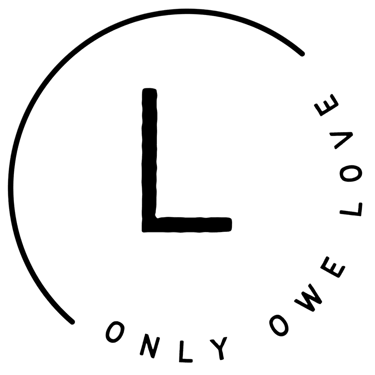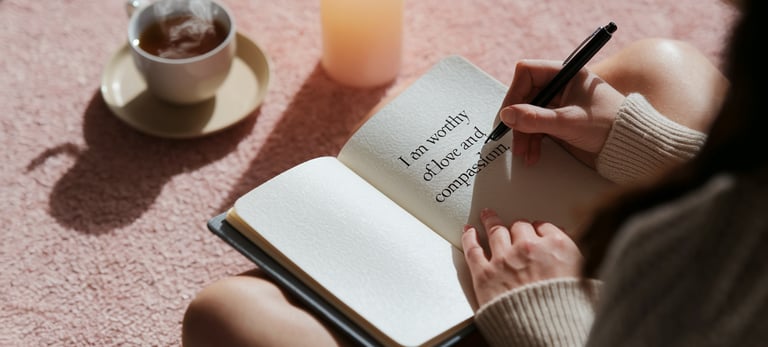Self-Forgiveness 101: How to Release Guilt, Find Inner Peace
Discover how letting go of guilt is a powerful act of self-love. In this guide, learn to practice self-forgiveness, release self-blame, and embrace healing and inner peace. It's time to break free from the past and move forward with kindness and compassion.
SELF-CARE AND WELLNESS
The content on this website was created with the help of AI. The content on this website was created with the help of AI. LOVEOWE LLC is a participant in the Amazon Services LLC Associates Program, an affiliate advertising program designed to provide a means for sites to earn fees by linking to Amazon.com and affiliated sites. This site utilizes affiliate links, meaning if you purchase a product via a link on this site, I may earn a small commission at no cost to you. All opinions remain my own. I get commissions for purchases made through links in this post. For more info, click here. Thank you for your support!
Let’s talk about something so many of us carry: guilt. It’s heavy, isn’t it? I’ve been there—replaying mistakes, feeling stuck, and wondering if I’d ever feel free again. But let me tell you something powerful: forgiving yourself can be life-changing. When you choose self-forgiveness, you’re not just letting go of guilt; you’re stepping into peace, healing, and a healthier mindset.
I read once that around 70% of people feel guilt or shame about their past, and it affects their mental health. That used to be me. But here’s the good news: self-forgiveness can reduce psychological distress by up to 30% and increase emotional well-being by 50%. It’s not just a concept; it’s a tool for transformation.
Today, I want to take you through my journey of self-forgiveness—the signs I noticed, the science that opened my eyes, and the steps I took to release guilt. My hope? That you walk away with practical ways to forgive yourself and create the inner peace you deserve.
What Self-Forgiveness Really Means
Self-forgiveness isn’t about brushing mistakes under the rug or excusing harmful behavior. For me, it was about compassion—learning to treat myself with the same kindness I’d offer a friend. It’s recognizing that I’m human, flawed, and still deserving of love.
When I started practicing self-forgiveness, I noticed huge changes. My guilt lessened, my emotional well-being improved, and I felt lighter. Studies back this up—those who embrace self-forgiveness report a 60% decrease in guilt and shame. Imagine shedding that much weight off your shoulders.
Here’s what I gained:
Improved emotional well-being: I stopped replaying old mistakes and started living in the present.
Increased self-compassion: I learned to be my own ally, not my harshest critic.
Better mental health: The constant anxiety and self-blame started to fade.
Forgiving yourself doesn’t mean you forget what happened; it means you stop letting it define you.
Recognizing the Signs of Unnecessary Guilt
If you’re anything like me, you might not even realize how much guilt you’re holding onto. For years, I blamed myself for things I couldn’t change. It showed up as shame, self-doubt, and even trouble sleeping. Did you know that 96% of people feel guilty daily? That’s how common it is.
Here are some signs I recognized in myself:
Persistent shame or self-blame
Replaying mistakes over and over
Feeling stuck or unable to move on
Avoiding people or situations that remind me of my past
Once I saw these patterns, I knew I had to break the cycle. For me, it started with small acts of self-compassion—like speaking to myself with kindness and reframing negative thoughts.
The Science Behind Self-Forgiveness
I’m a sucker for understanding the “why” behind things, so I dug into the research. Did you know that self-forgiveness techniques can lower anxiety, depression, and stress? They also boost self-esteem and lead to healthier relationships.
Here’s what else I discovered:
Improved life satisfaction: Forgiving myself helped me enjoy life more.
Enhanced emotional stability: I stopped reacting to every negative thought.
Better quality of life: Everything felt lighter—my relationships, my goals, even my day-to-day mood.
Knowing this gave me the push I needed to commit to self-forgiveness. If you’re on the fence, let the science speak for itself: forgiving yourself is worth it.
Breaking the Cycle of Self-Blame
Self-blame was my comfort zone for years. I thought if I punished myself enough, I’d “make up” for my mistakes. But all it did was keep me stuck. Breaking that cycle meant learning to see myself with fresh eyes.
Here’s what helped me:
Practicing self-compassion: I reminded myself that everyone makes mistakes. I’m not the only one.
Mindfulness and movement: Activities like yoga and meditation grounded me in the present.
Seeking support: Whether it was a trusted friend or a therapist, having someone to talk to made a world of difference.
It’s not an overnight fix, but every small step adds up. The more I let go of self-blame, the more space I had for joy and growth.
Steps to Start Your Self-Forgiveness Journey
If you’re ready to forgive yourself, here’s what worked for me:
Acknowledge your mistakes: Owning up to my actions (without judgment) was the first step.
Practice self-compassion: I started treating myself like a friend instead of an enemy.
Reframe negative thoughts: Whenever I caught myself spiraling, I shifted my focus to what I’d learned.
Seek support: Talking to someone I trusted made the process feel less lonely.
This journey takes time, but every step brings you closer to peace. Be patient with yourself—you’re doing the work, and that’s what matters.
Practical Techniques for Letting Go of Guilt
Here’s what I still practice to release guilt:
Write a forgiveness letter to yourself: Pour it all out on paper, then let it go.
Meditate daily: Even 5 minutes can calm your mind and ease guilt.
Practice gratitude: Focusing on the good in my life shifted my perspective in powerful ways.
These techniques aren’t just about feeling better in the moment—they’re about creating lasting change. Each time I practice them, I feel more at peace with myself.
Overcoming Obstacles to Self-Forgiveness
Self-forgiveness isn’t always easy. I used to think forgiving myself meant I was letting myself off the hook. But I learned that it’s not about excusing mistakes; it’s about releasing the pain tied to them.
If you’re struggling, here’s what helped me:
Recognize the difference between guilt and shame: Guilt says, “I did something bad.” Shame says, “I am bad.” Only one of those is true.
Practice self-care: Simple acts like journaling, walking, or even just resting helped me reset.
Take it one step at a time: I didn’t have to forgive everything all at once. Progress is still progress.
Remember, it’s okay to ask for help. Whether it’s a friend, family member, or therapist, support can make all the difference.
Creating Your Personal Path to Peace
Your self-forgiveness journey is yours alone. For me, it meant reflecting on my values, setting realistic goals, and reminding myself daily that I deserve peace.
Here’s how you can start:
Reflect daily: What’s one thing you’re proud of today?
Set small, achievable goals: Focus on progress, not perfection.
Celebrate your growth: Every step forward is a victory.
Healing is a journey, not a destination. Be kind to yourself along the way. You deserve love and forgiveness, just like anyone else.
Moving Forward
Forgiving myself changed everything. It brought me peace, joy, and the freedom to move forward without the weight of guilt holding me back. And you can have that too.
As you take this journey, remember to be patient with yourself. Celebrate the small wins, lean on your support system, and keep going. You’re stronger than you think, and you’re worthy of a guilt-free, joyful life.
You’ve got this. And I’m cheering you on every step of the way.






